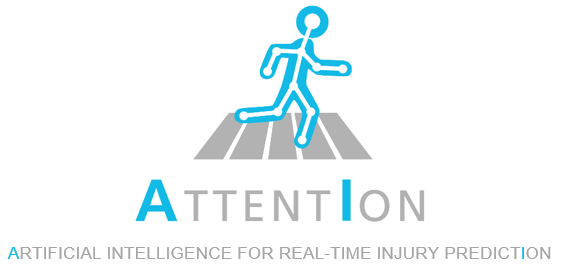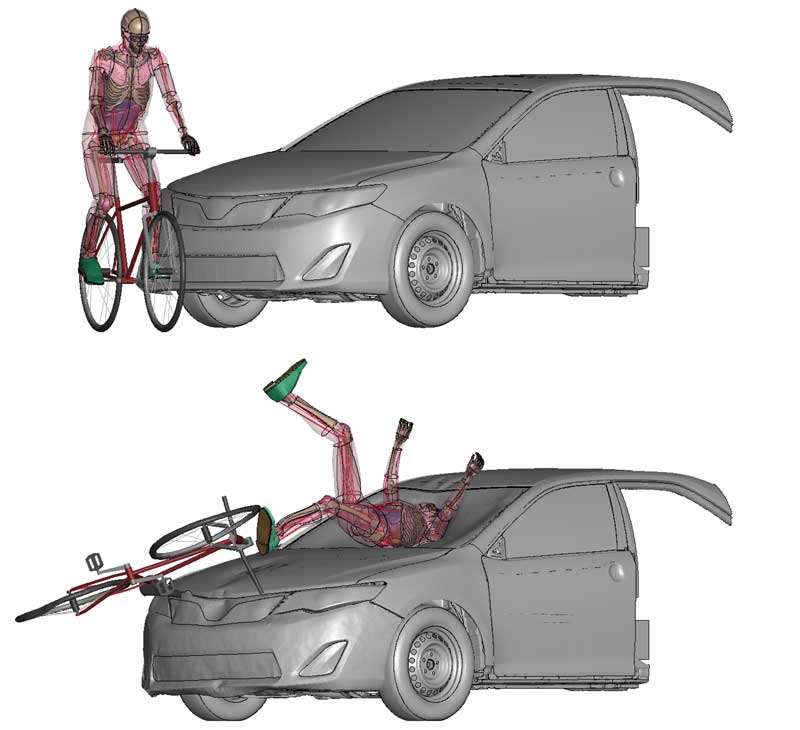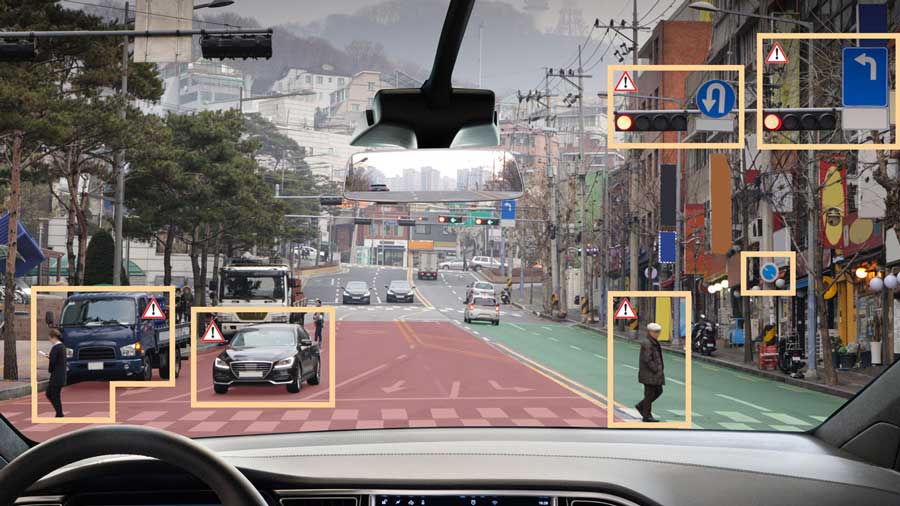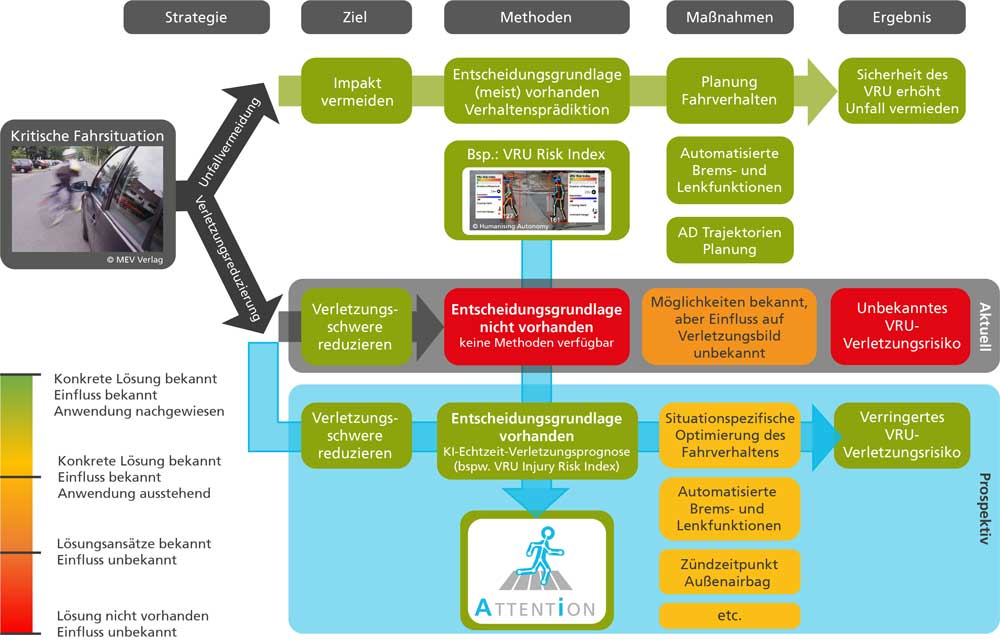Fraunhofer EMI with focus on VRU-car collision simulations
The goal of the ATTENTION project is to develop a method for real-time injury prediction of vulnerable road users (VRUs), such as pedestrians or cyclists. For this purpose, data-driven methods are used to determine a situation-specific injury risk from vehicle-based video data and virtual tests with the help of digital human models. Prospectively, injury prediction enables both safe and efficient traffic through automated vehicle risk mitigation strategies.


Multimodal traffic and human individuality as major challenges for autonomous driving
In many German inner cities, urban mobility is characterized by the multiple use of limited and narrow traffic areas and a large number of different road users, which in their entirety constitute multimodal traffic. A key future issue for cities and mobility service providers is the efficient and, at the same time, safe use of shared public spaces. Participating road users differ substantially in terms of speed, maneuverability and vulnerability. The large-scale establishment of automated traffic promises to reduce traffic accidents and fatal road injuries through their interaction. Nevertheless, complex inner-city scenarios, undirected traffic flows and human individuality pose major challenges to increasing automation.
Classification in existing safety concepts
Collisions between vehicles and VRUs still lead to a large number of accident fatalities. The number of traffic accidents involving cyclists has not decreased in the EU since 2010 and has even increased in Germany. Even in future multimodal traffic, collisions between vehicles and VRUs cannot be ruled out due to the previously mentioned aspects, such as human individuality.
With regard to the road safety of VRUs, the primary goal must be to avoid an accident as best as possible. Sensor technology and communication systems implemented in the vehicle are already being used to identify potential collisions at an early stage and, for example, to adjust the safety distance via assistance systems and avoid collisions with active braking and steering systems. But what if the accident is unavoidable?
If the “Vision Zero” (no more traffic fatalities by 2050) is to be addressed realistically, it must be accepted that not all accidents are preventable and that current and future traffic is therefore accompanied by an uncertainty factor, for example, due to human individuality. Consequently, in addition to accident avoidance strategies, accident mitigation measures and, thus, injury reduction must also be considered, which raises the question: In the event of an unavoidable collision: Which technical measures can be taken to reduce the situation-specific injury risk of VRUs? The project ATTENTION addresses this gap in a proof-of-concept study.


